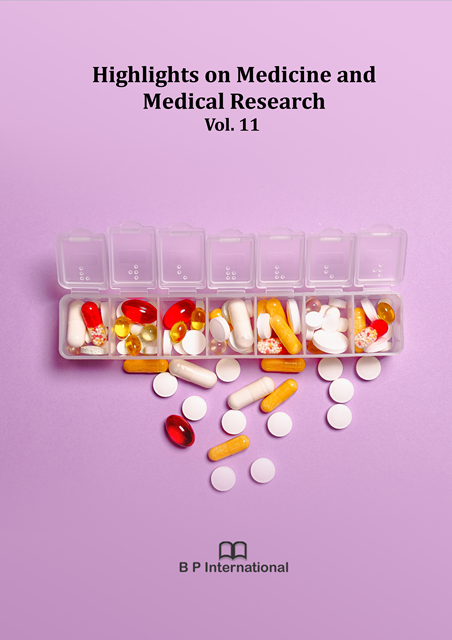Impact of Specific Exercises on Curvature and Deformity in a Sample of Patients with Idiopathic Scoliosis
Highlights on Medicine and Medical Research Vol. 11,
4 May 2021
,
Page 146-153
https://doi.org/10.9734/bpi/hmmr/v11/8655D
Abstract
There is a great variety of exercises for scoliosis offered worldwide many of them with little benefit for the patient. We distinguish between unspecific and specific exercises. Specific physiotherapy may have a significant influence on many signs and symptoms of a scoliosis. This, however has up to now only been proven for the Schroth method and in part for the Schroth Best PracticeÔ program as well. Purpose of this study was to investigate the amount of corrections possible with respect to the spinal curvature and trunk deformity.
Materials and methods. This is a prospective short-term cohort study. 60 patients with idiopathic scoliosis regularly treated at our department with the Schroth Best PracticeÔ program have been followed up prospectively for at least two months. Average age was 16 years (11 – 19 years), average Cobb angle thoracic was 23.5° (6 – 56°), lumbar 21.2° (6 - 52°). Average ATR (Angle of trunk rotation) thoracic was 8° (3 – 18°) and lumbar 7.9° (2 – 17°).
Results. The follow-up period was 2,9 months. During this time the average thoracic Cobb angle decreased from 23.5° to 18.2° (-5.3°; p < 0,05). Lumbar Cobb angle decreased from 21.2° to 15.7° (- 5.5°; p < 0.01). Thoracic ATR decreased from 8° to 5.6° (- 2.4°; p < 0.01) while lumbar ATR decreased from 7.9° to 5.7°(- 2.2°; p < 0.01). The subset of patients with Cobb angles exceeding 30° experienced a correction of more than 9° (p < 0.01).
Conclusions: The Schroth Best PracticeÔ program is highly effective with respect to improvements of spinal curves and trunk deformity. Curvatures exceeding 30° show better results than smaller curvatures. The out-patient Schroth Best PracticeÔ program seems to provide better results than intensive in-patient rehabilitation using the old Schroth standard still in use today. In phases of little growth or in the outgrown patient this program can be used as the sole form of treatment. In phases of high growth velocity bracing is indicated primarily. Here this program is used as an adjunct to bracing regularly.
- Scoliosis
- physiotherapy
- schroth
- scoliologic
- Cobb angle
- ATR

